Return to Photo Index Return to Clickable Map Return to Home Page
Travel Pictures - INDIA (South) - 1999
India certainly lives up to the stereotype of impossibly crowded cities with holy cows wandering
the streets as they please. However, there is much
to surprise and astonish the visitor - especially those who stray from the beaten path. In
fact, the amazing array of man-made marvels in this country may be
unmatched on the planet. Perhaps even more mind-boggling is that a country
with such an enormous human population can possess wildlife parks that,
although small in area, contain a variety of animals that rival Africa.
I entered the country at Mumbai and
traveled down the west coast through Goa and Madurai before moving north
to Bangalore, Hyderbad, and Gandhi's ashram in the very heart of the
nation. The next destination was the capital city of New Delhi which was
the launching point for excursions to Agra (Taj
Majal), Rajasthan, and the Himalayan Mountains.
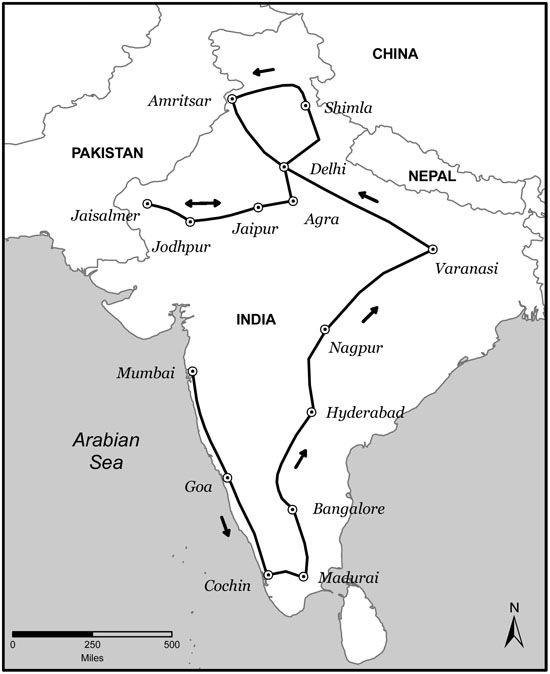
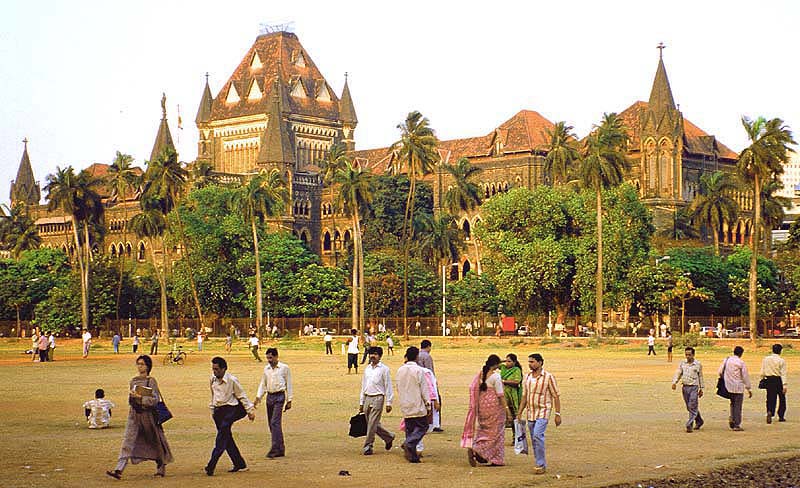
Mumbai, India
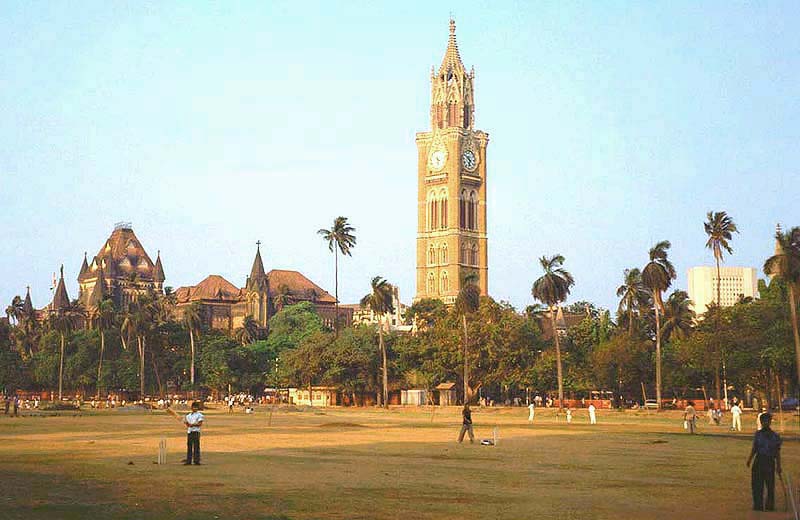
Mumbai, India
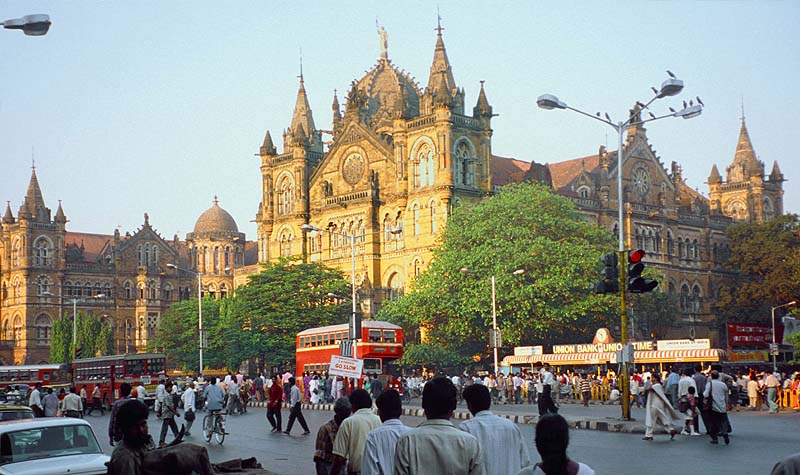
and World Heritage Site. Although the structure gives a strong appearance of civility, it is pure chaos inside those stone walls with
people sleeping on the floors and masses of Indians standing in impossibly long queues. The locals (Indians) had to wait in lines
with waits of several hours; meanwhile, foreigners (like myself) had their own "special" lines with NO waits! -
Mumbai, India
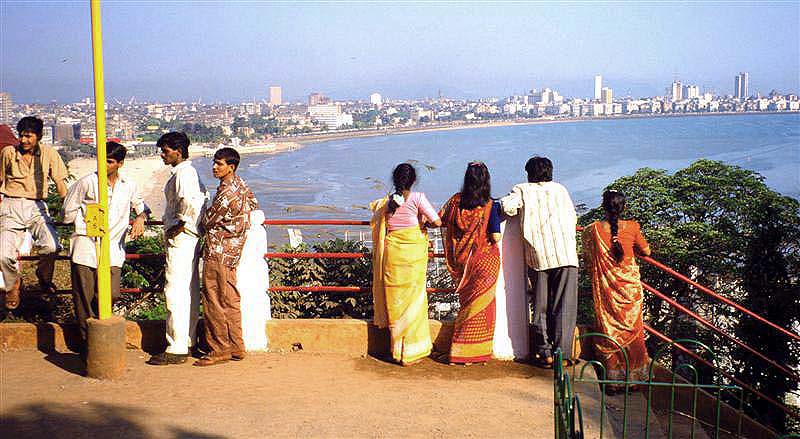
Mumbai, India
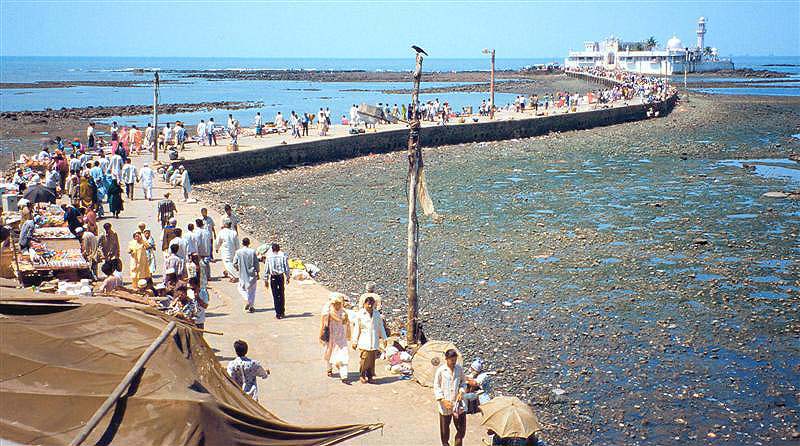
This picture was taken at low tide when pedestrians may safely stroll the rail-less causeway -
Mumbai, India
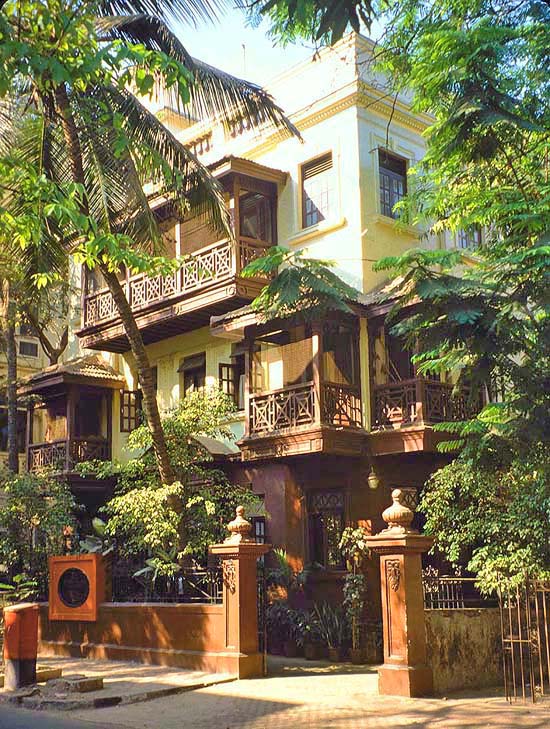
In addition, it was at this location that Gandhi launched several of his political movements.
The building is now a museum that chronicles his life story -
Mumbai, India
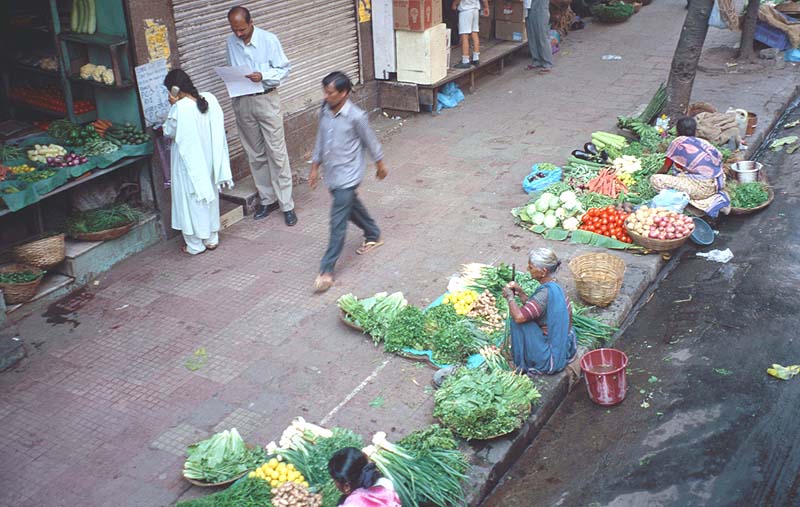
Mumbai, India
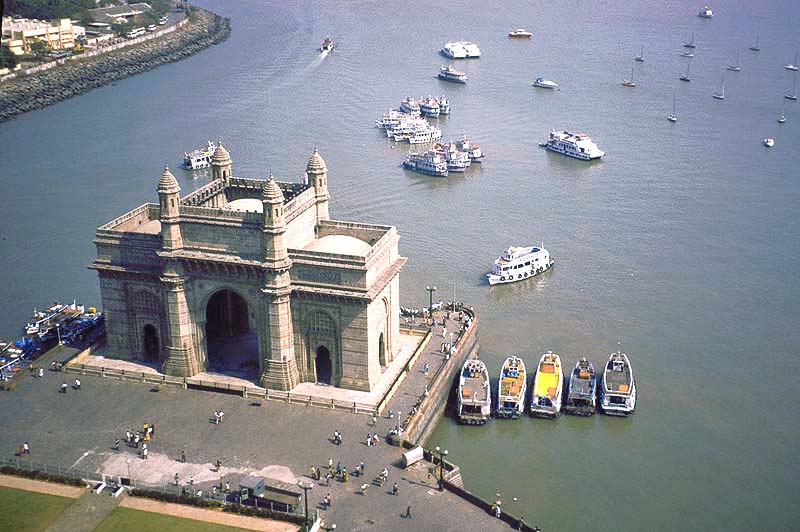
through the windows of the top floor bar of the nearby Taj Mahal Hotel -
Mumbai, India
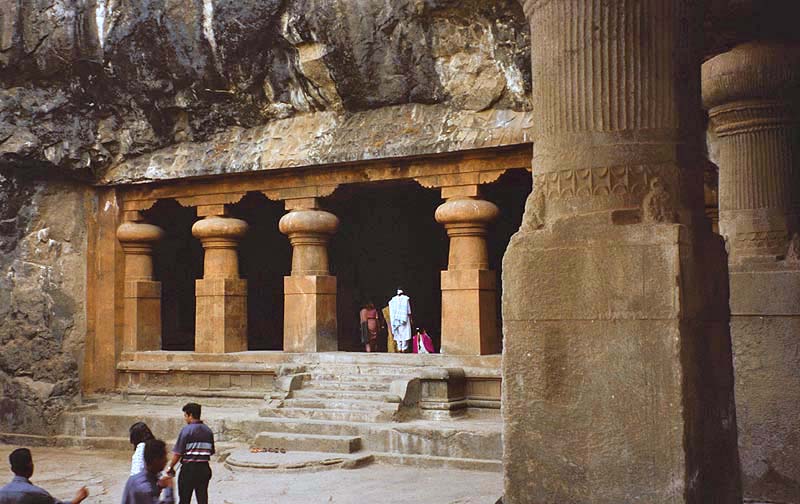
that I would visit and, typical of the majority of India's attractions, I was amazed even though I had never even heard of the attraction -
near Mumbai, India
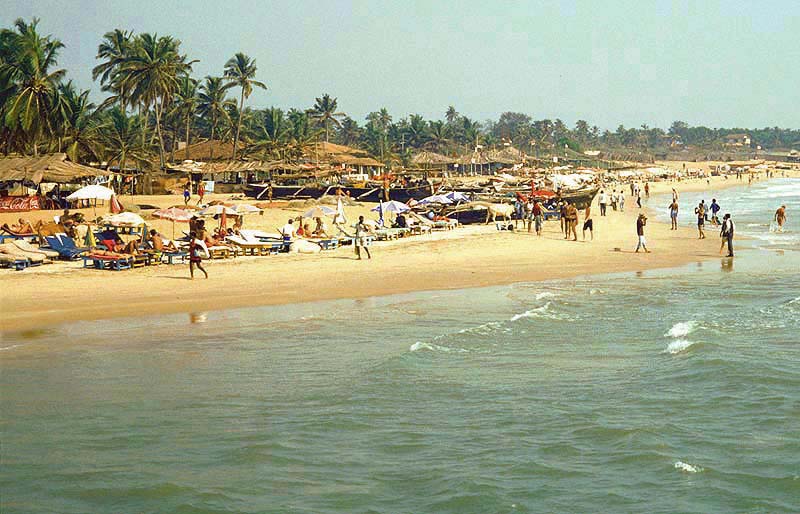
Portuguese enclave attract Indians, Europeans, and all types of travelers. Where else but India will you find
half-naked Europeans, Indians dressed in full-length Saris, and COWS all sharing the same beach? -
Colva Beach; Goa, India
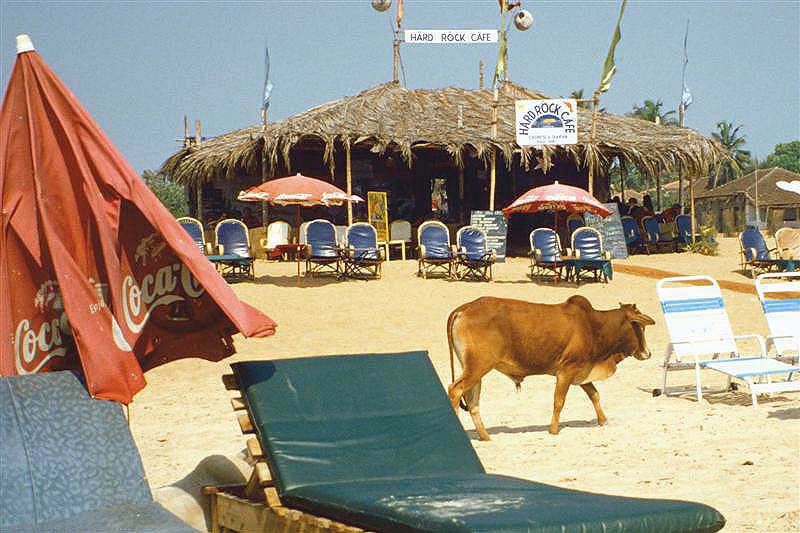
Baga Beach; Goa, India
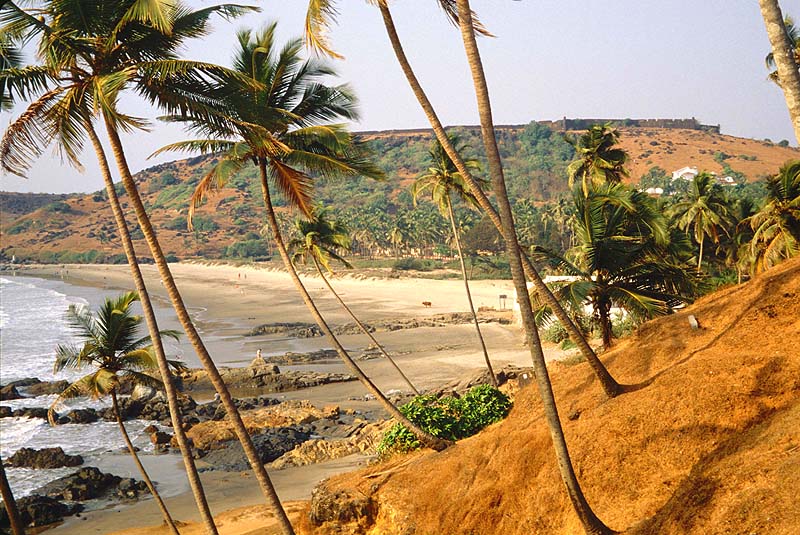
notice the brown cow (center of picture) enjoying the seascape -
Goa, India
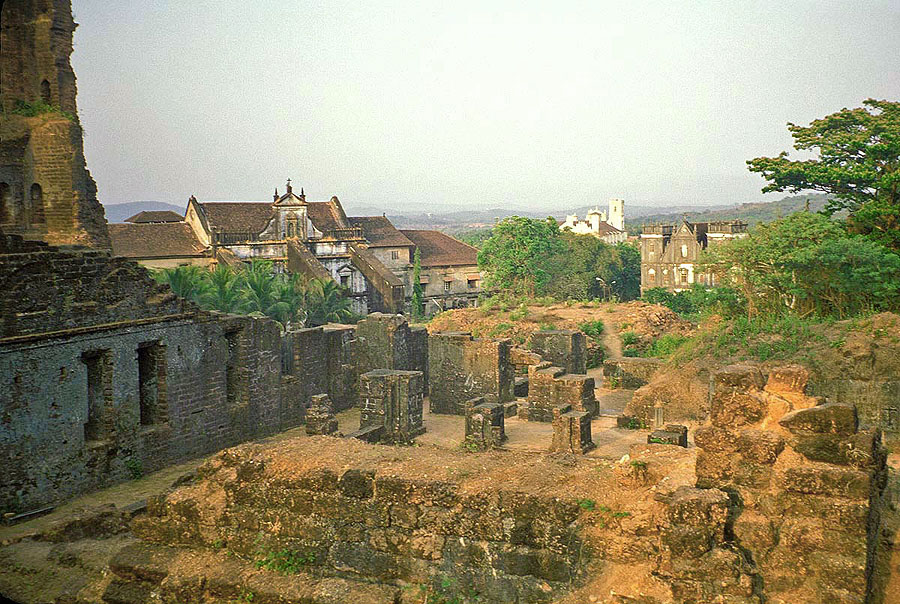
the 1500's and 1600's. Old Gao's imposing churches are lavishly constructed with interior domes, columned balconies, and outdoor courtyards -
Old Goa, India
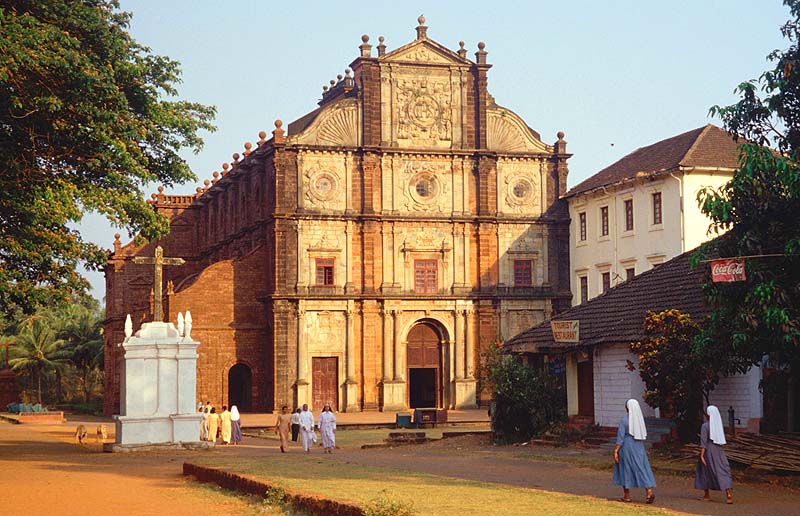
of the Jesuits. St. Francis Xavier ventured on extensive missionary voyages throughout primitive S.E. Asia. When he died in 1552, "The incorrupt
body of St. Francis Xavier" was said to have avoided decay despite not being embalmed - only placed in quicklime. The "miracle" was said to
have continued for more than a 100 years, and parts of the body were spread throughout S.E. Asia. Finally, the remains were placed in a
glass coffin and they are on display in the church. Evidence that sometimes fact is stranger than fiction!-
Old Goa, India
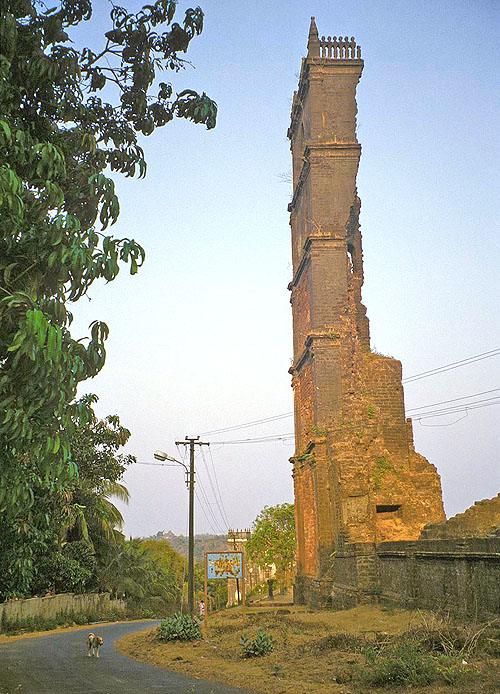
Old Goa, India
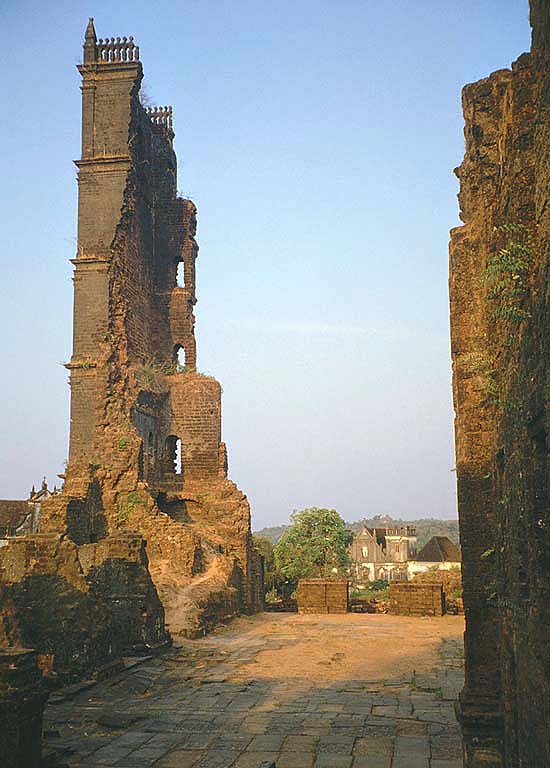
Old Goa, India
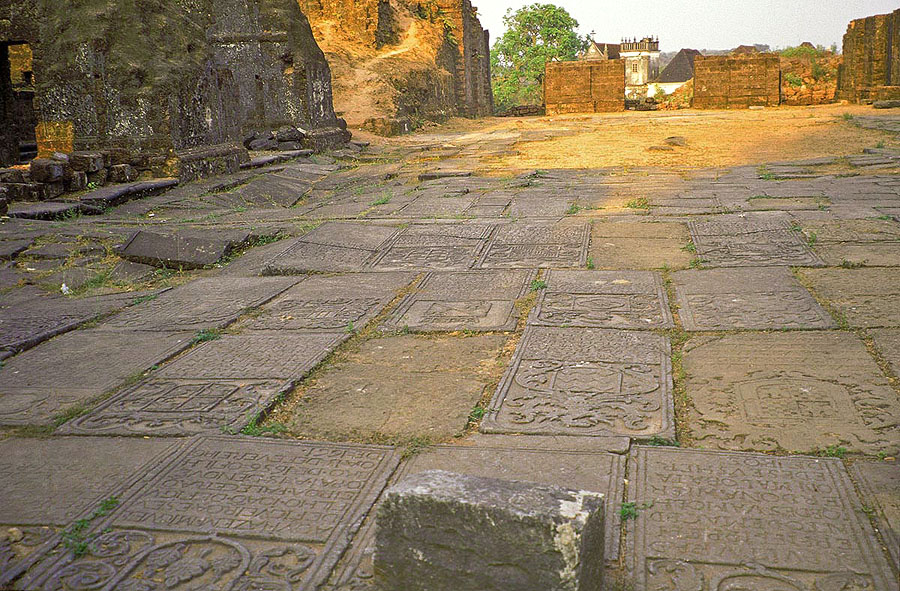
India has many treasures that have been abandoned, often due to the population being decimated by disease and epidemics
or radical changes in the cultures religion from conflict -
Old Goa, India
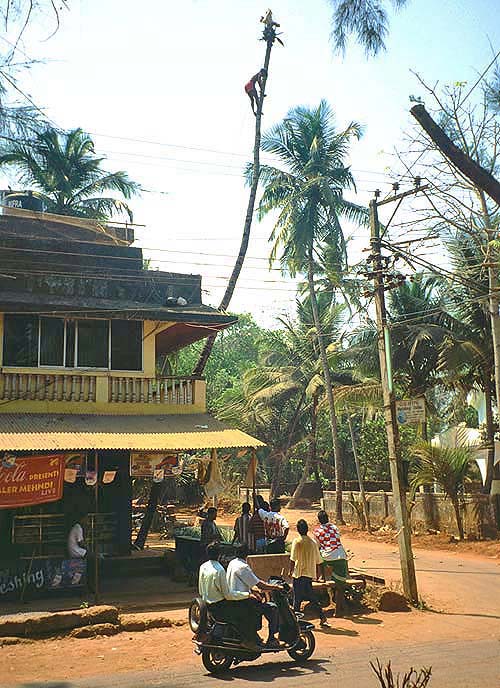
piece by piece, using only a machete and a firm grip -
Benaulim, India
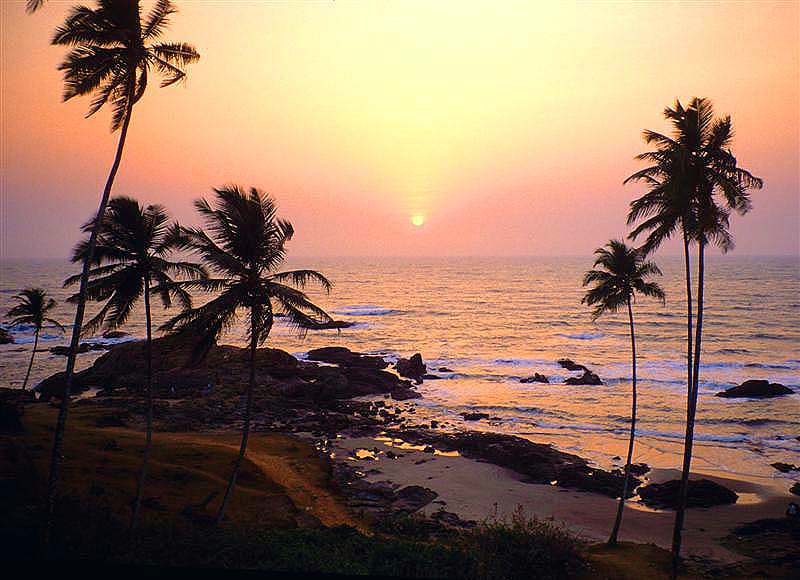
Vagator Beach; Goa, India
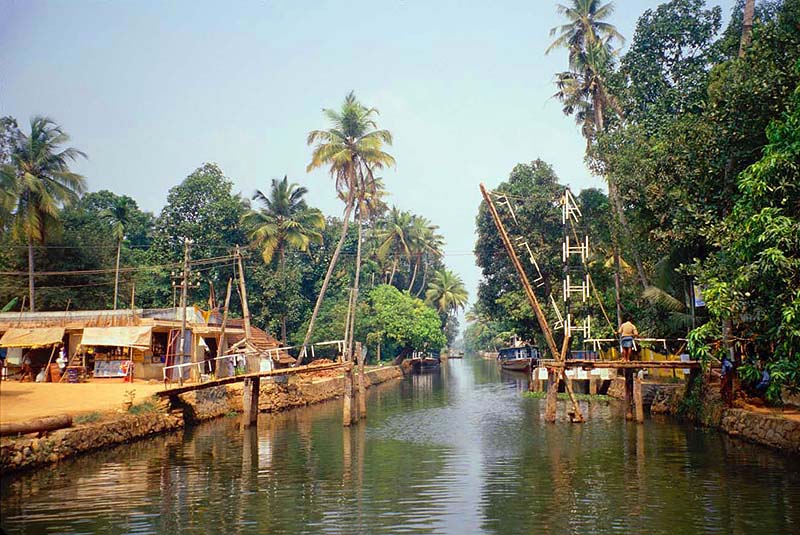
to the creation of a watery lifestyle that is unique within India. This creative drawbridge is raised and lowered manually -
Allepey, India
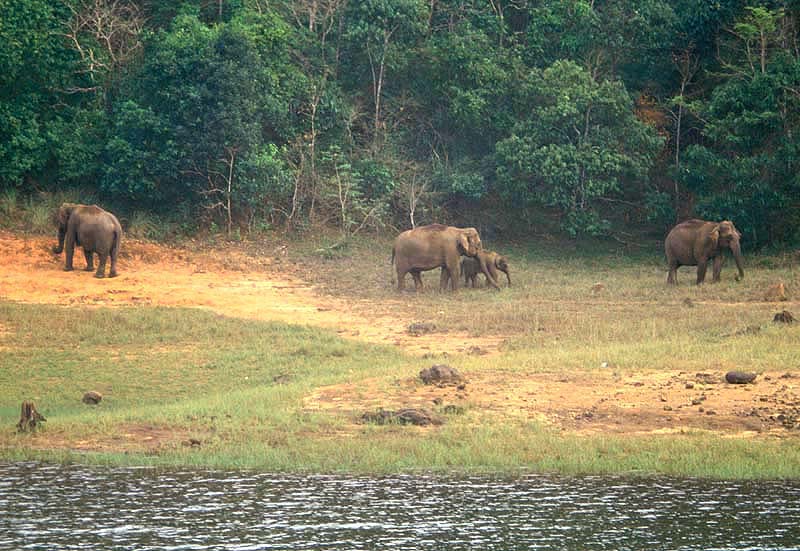
to a multitude of magnificent wildlife parks. Most visitors experience the park either from the back of an elephant or from boats plying Periyar's
large, man-made lake set amid forests and savannah. In addition to these wild elephants, I observed spotted deer, sambar (a large Indian deer),
wild boar, monkeys, bison, otter, and a small group of wild dogs feasting on a freshly killed sambar -
all during a brief two hour boat ride! The park also has tigers and leopards -
Periyar Wildlife Sanctuary, India
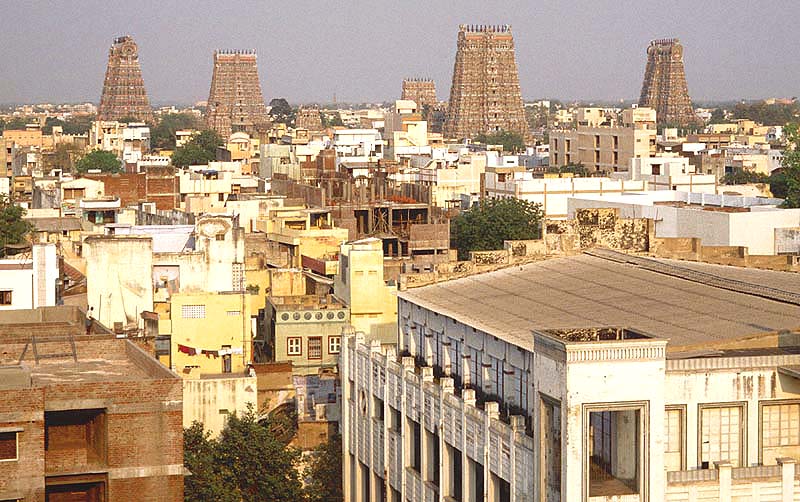
Madurai, India
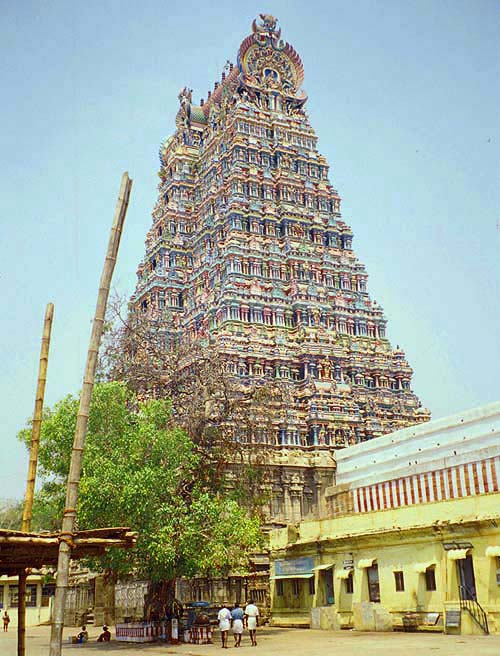
Sri Meenakhi Temple; Madurai, India
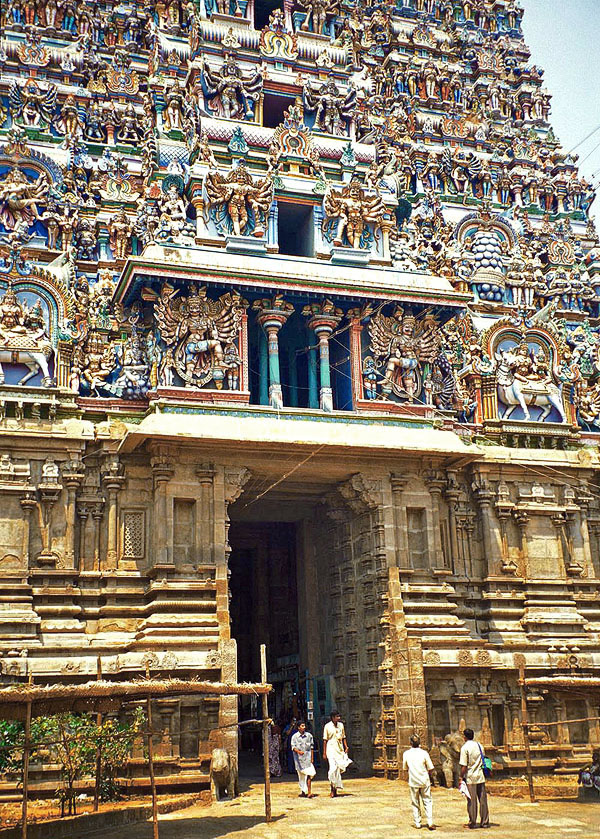
Sri Meenakhi Temple; Madurai, India
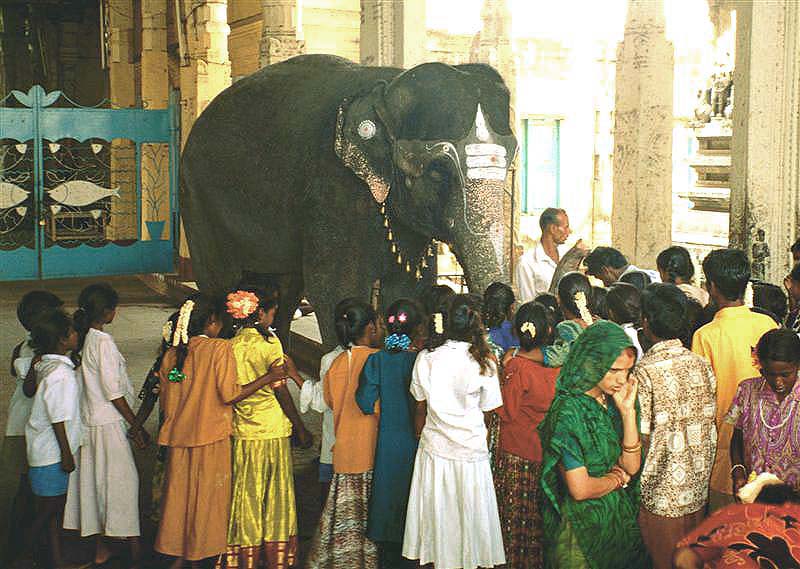
Sri Meenakhi Temple; Madurai, India
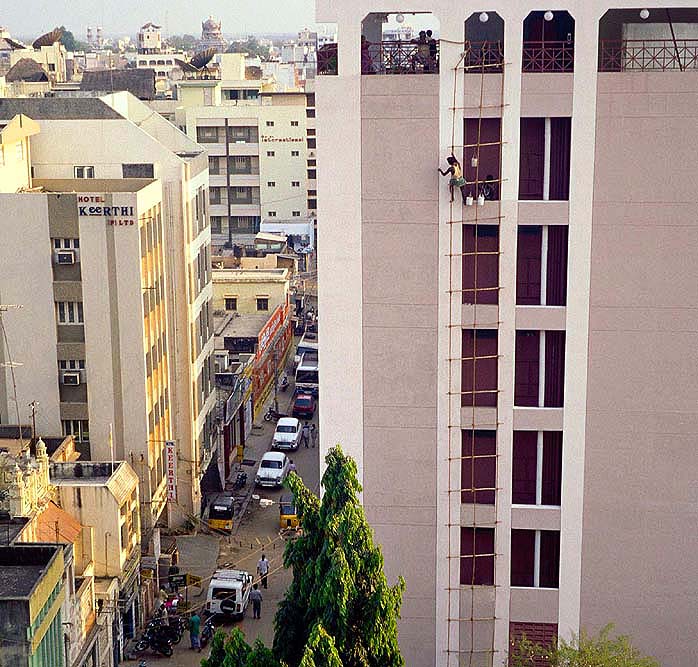
Madurai, India
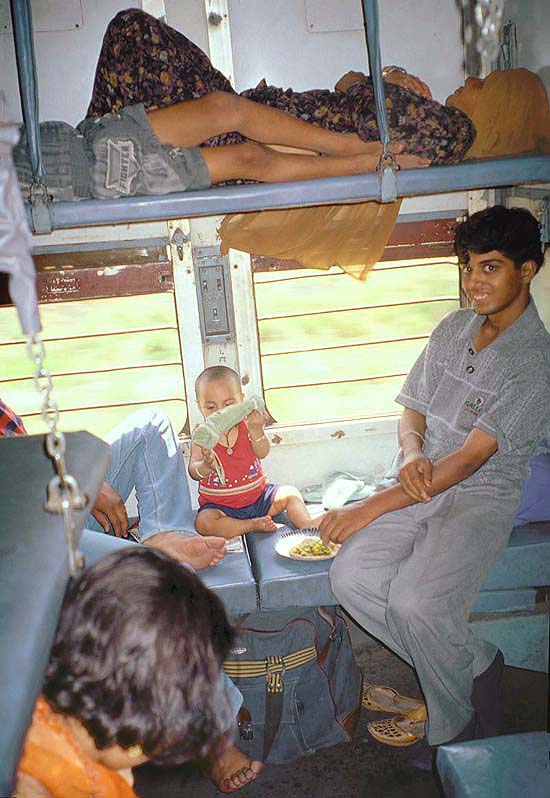
assumed was a friendly gesture ... until it set my mouth on fire!
Well, it's not the hot, but the "thought" that counts -
near Delhi, India
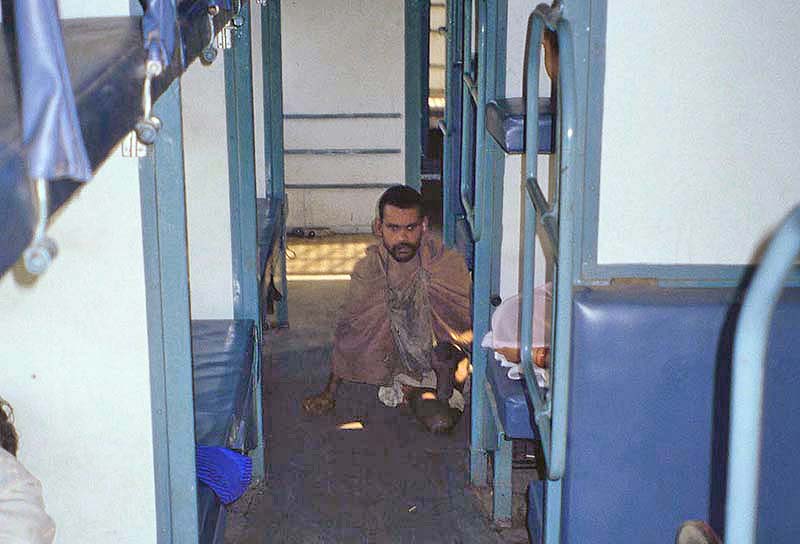
empathy for the less-fortunate and a strong desire to not support begging as a lifestyle. However, in this case, the choice was not so difficult -
near Delhi, India
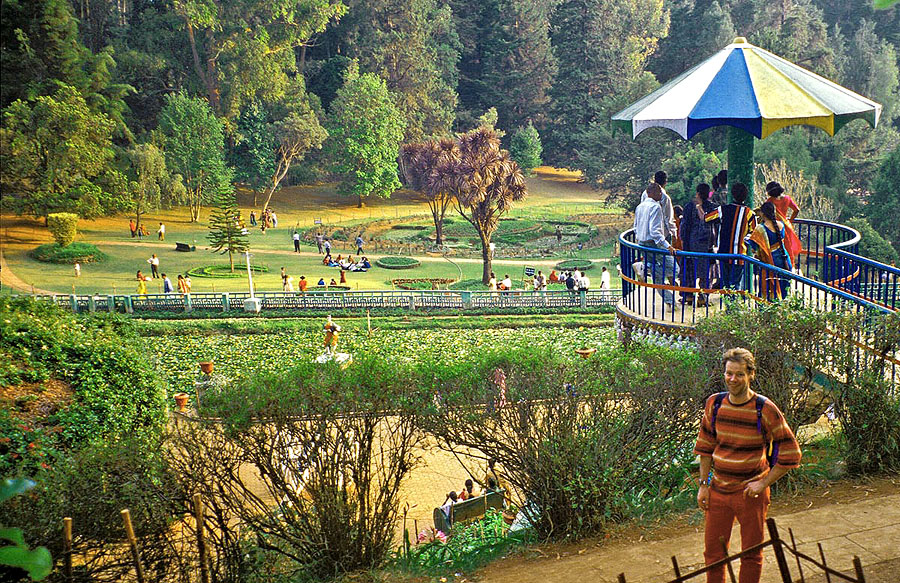
Ooty, India
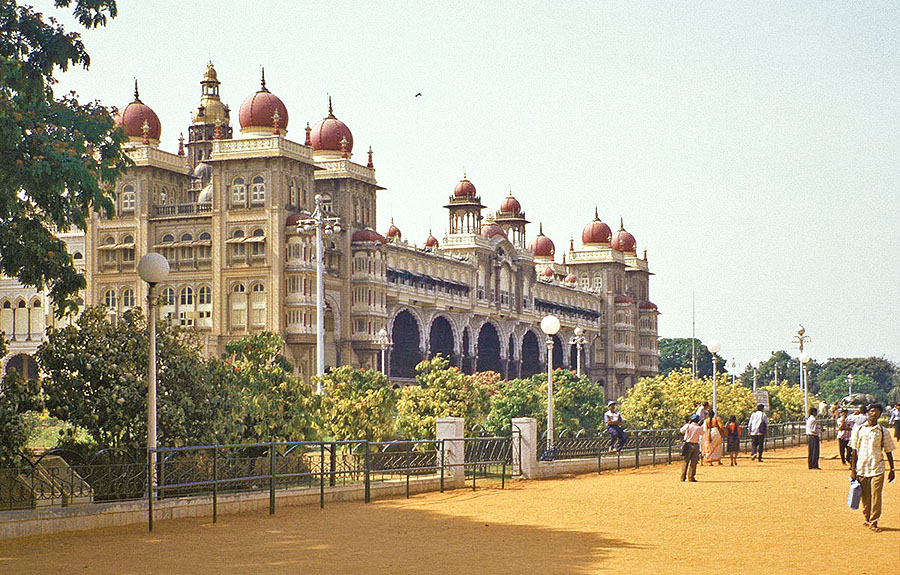
with huge carved doors and exquisitely painted walls showing scenes of fantastic palace celebrations -
Mysore Palace; Mysore, India
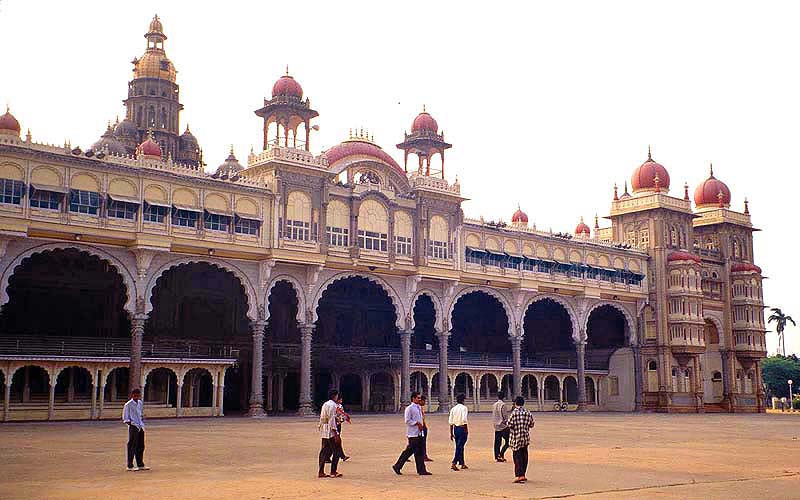
tour the interior. Something seemed amiss as I viewed such opulence in my bare feet along with all of the other barefooted tourists.
The absence of shoes (and the resulting sand and grit) is said to help preserve the marble floors -
Mysore Palace; Mysore, India
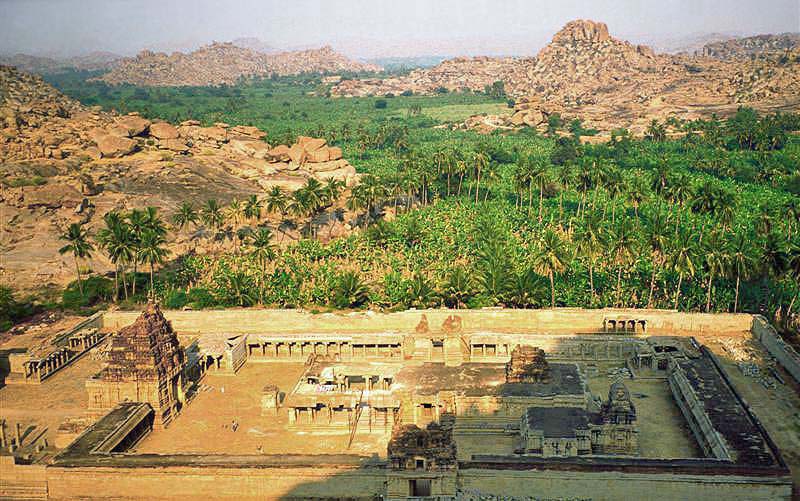
from the 1300's to the 1500's. At its peak, the city had a population of a half a million only to be abandoned after Muslim invasions
overtook the Hindu empire in 1565. The ruins are scattered among banana and coconut plantations, and hemmed-in by
boulder-strewn mountains decorated with balancing rocks -
Hampi, India
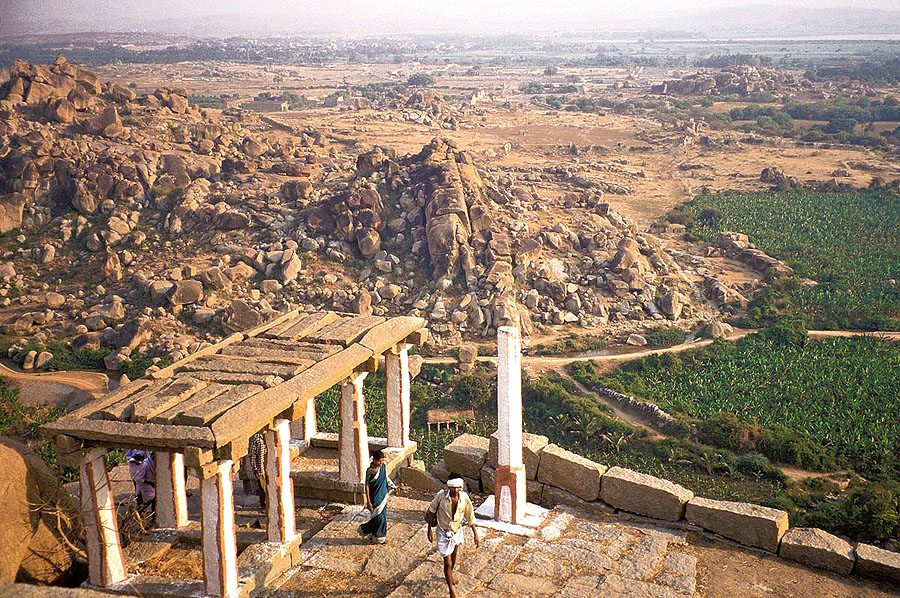
Hampi, India
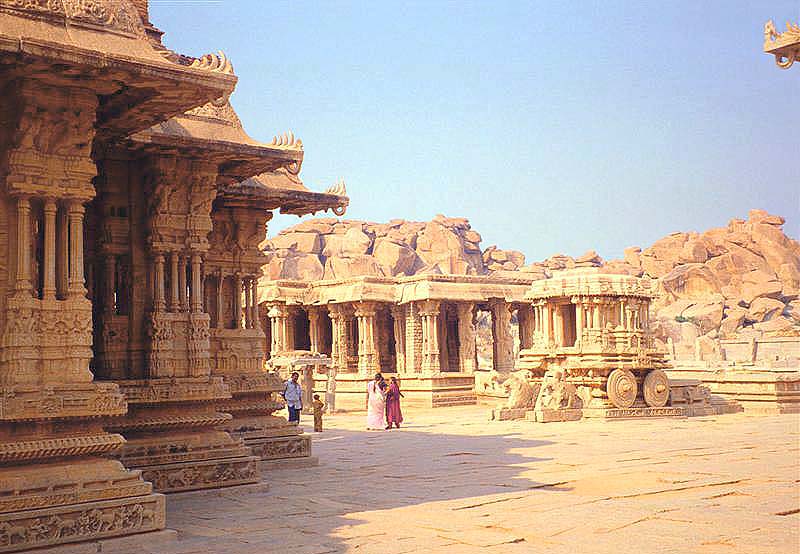
has its own style with musical stone columns and an imaginative layout that is adorned with profuse carvings -
Hampi, India
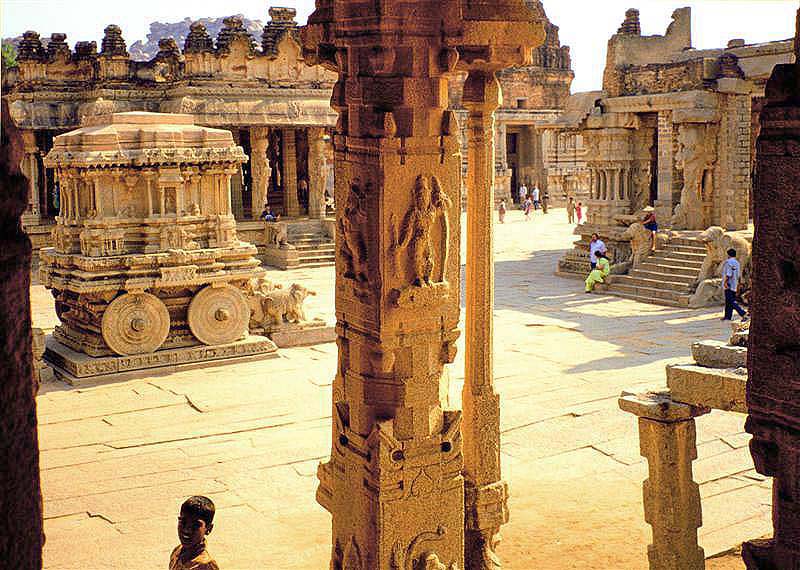
Hampi, India
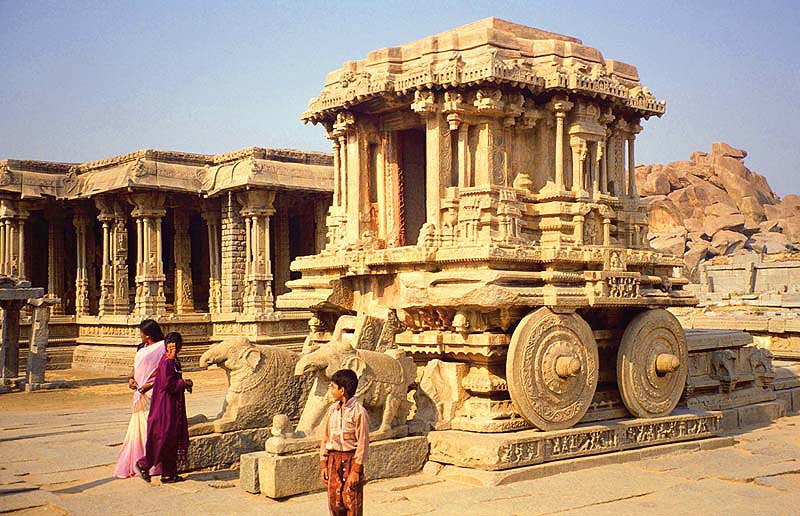
Hampi, India
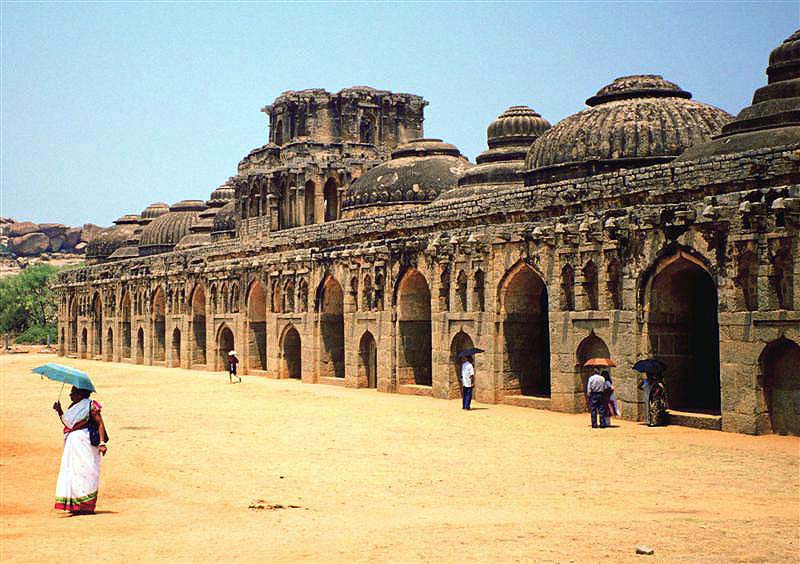
Elephant stables; Hampi, India
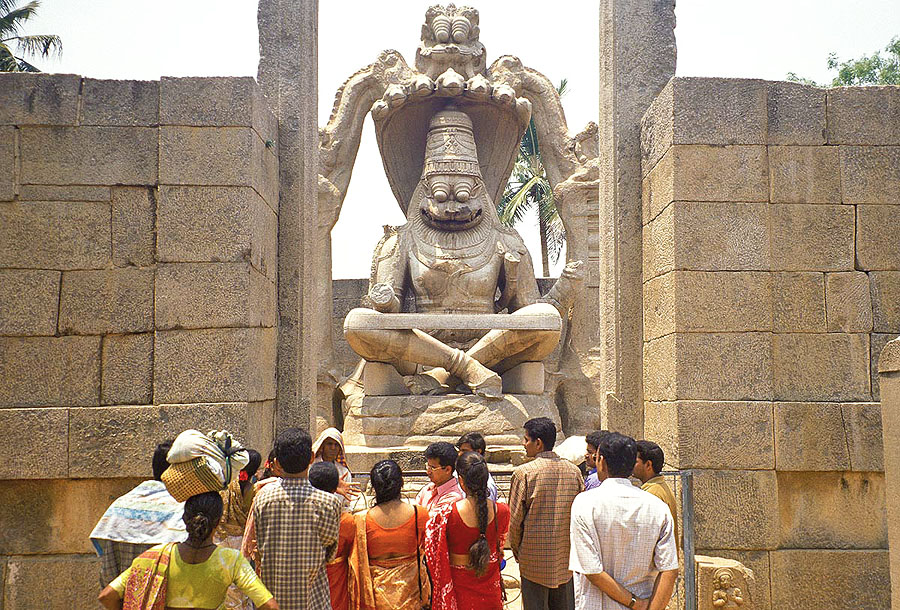
in the form of a half-man half-lion. The granite strap was added to stabilize the knees -
Hampi, India
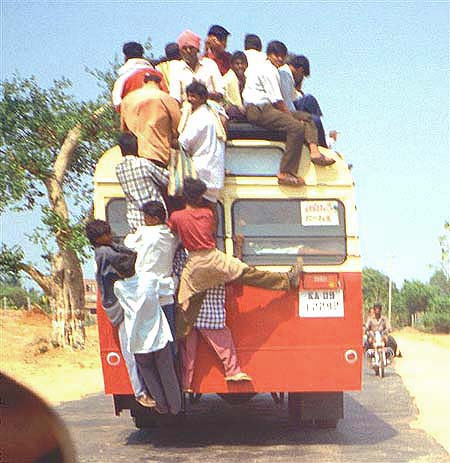
and a popular gathering as evidenced by these attendees -
near Hampi, India
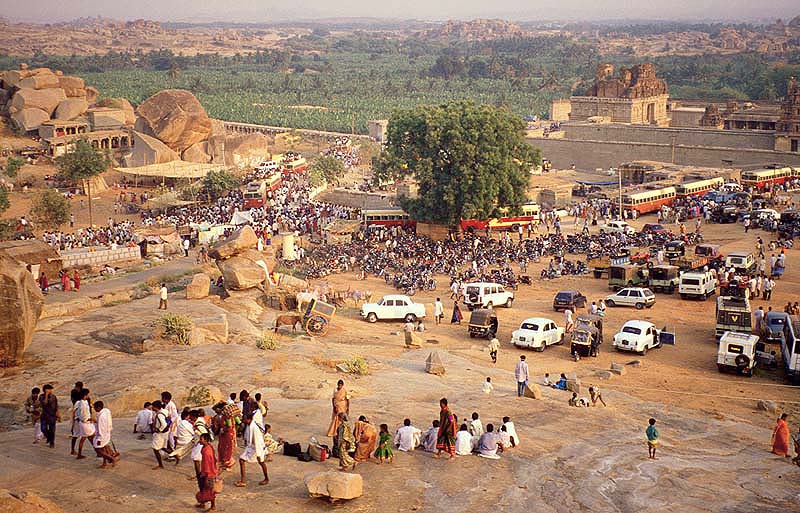
inside the buses or on the roof of the buses, arrived piled onto rickshaws and oxcarts -
Hampi, India
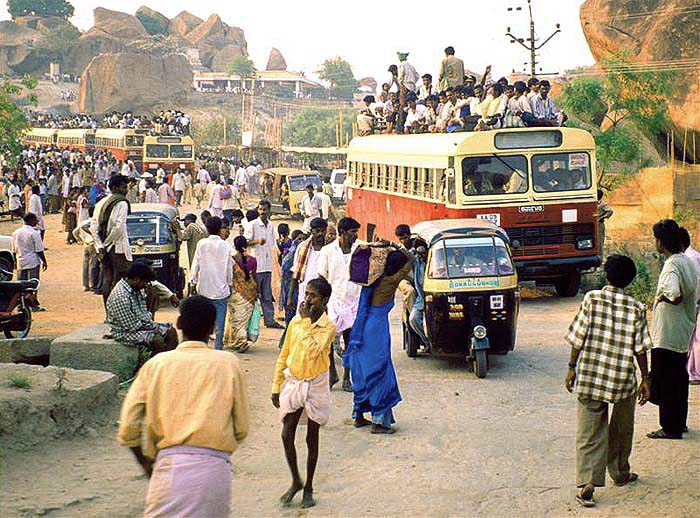
Hampi, India
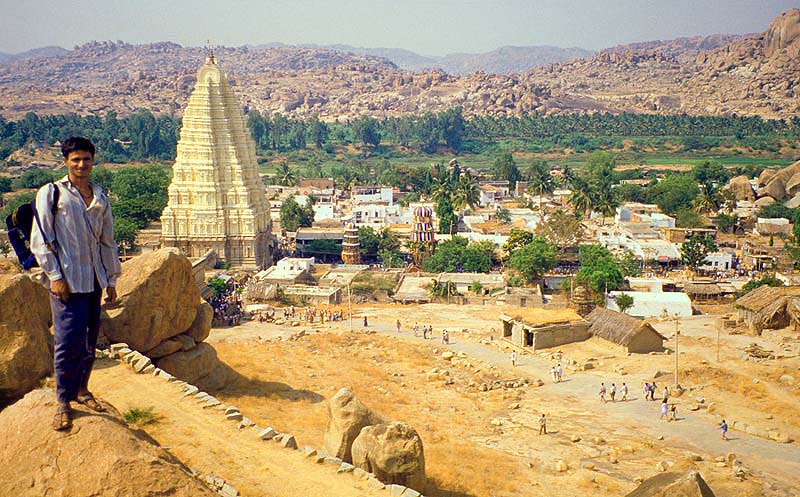
Hampi, India
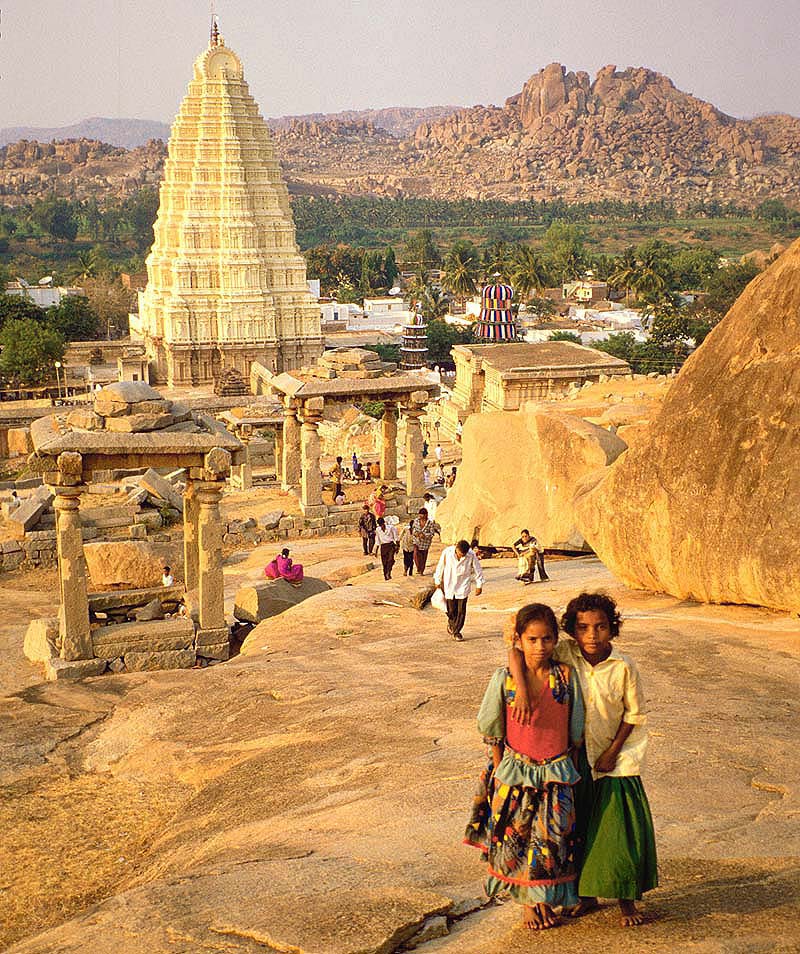
"rolling gopurams" that have been readied for the festival -
Hampi, India
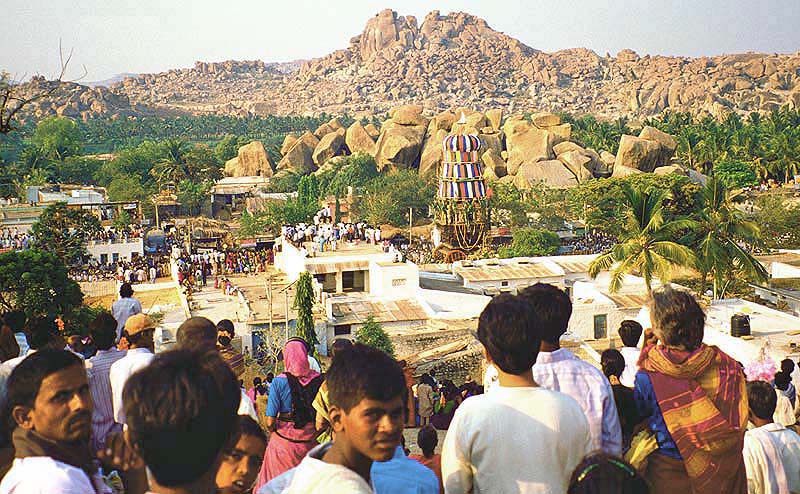
Hampi, India
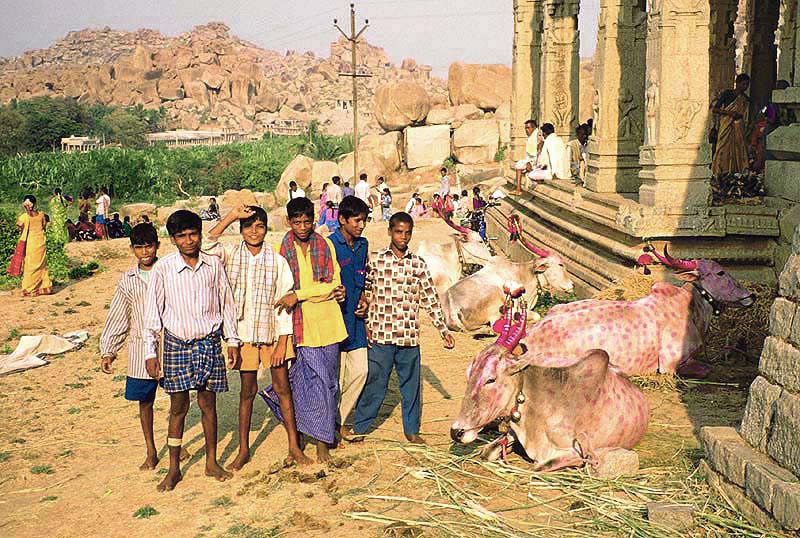
Hampi, India
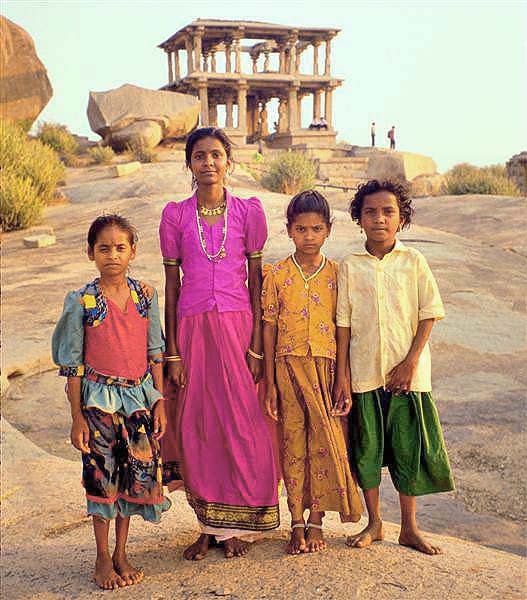
Hampi, India
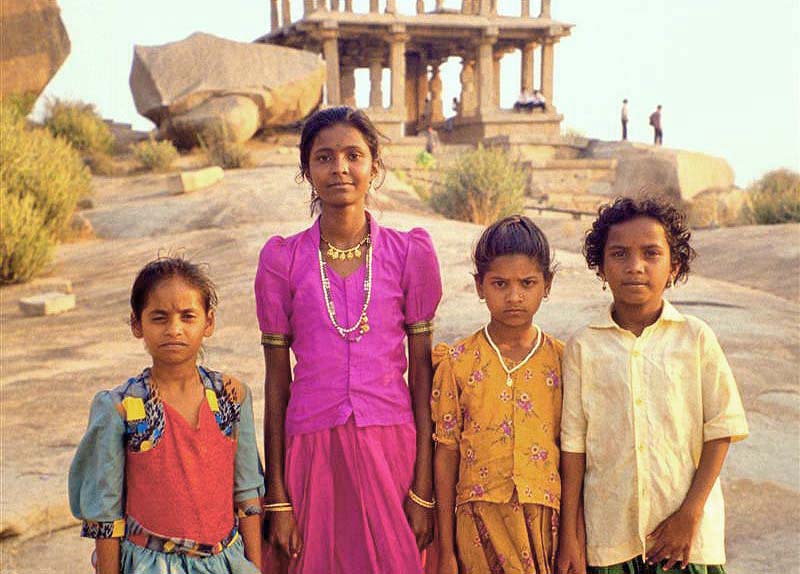
Hampi, India
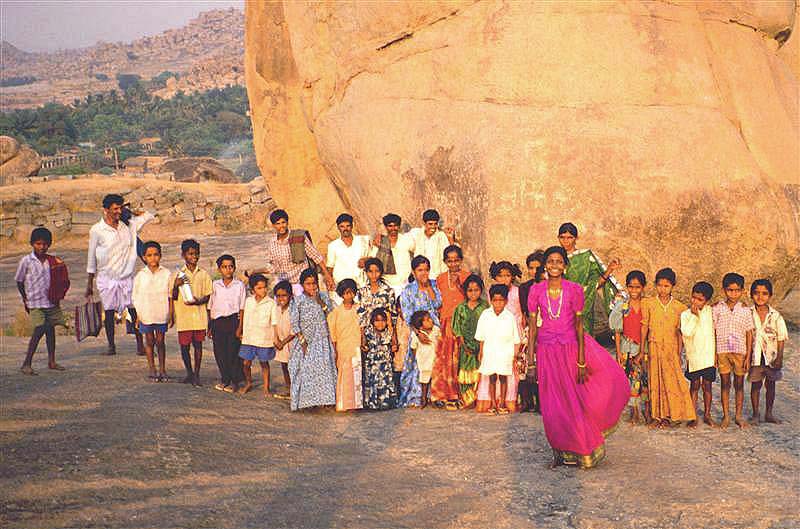
and she quickly assembled her "friends" for a group photo -
Hampi, India
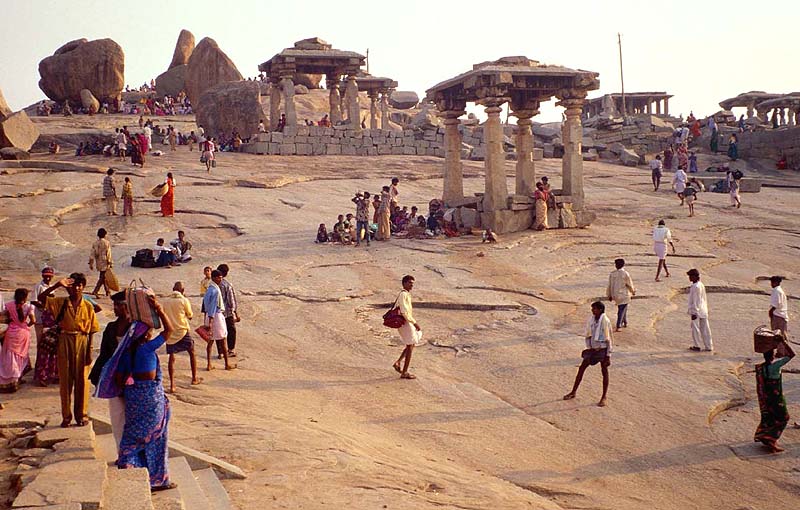
Hampi, India
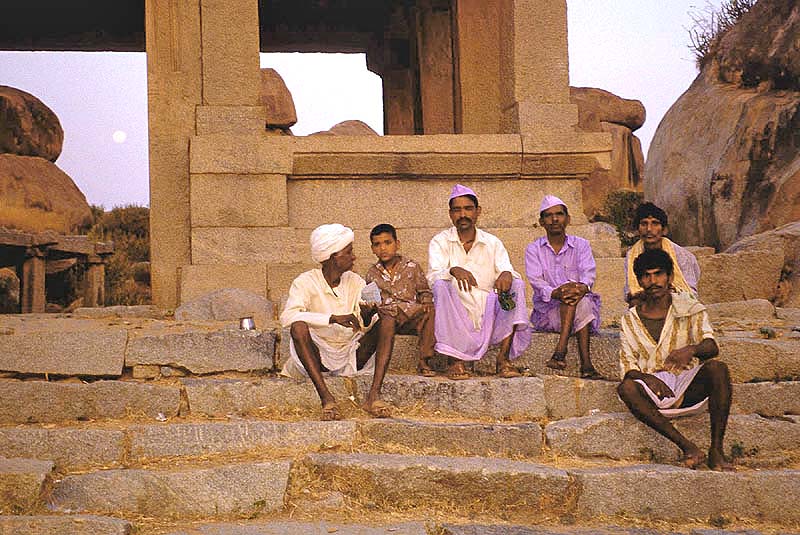
Hampi, India
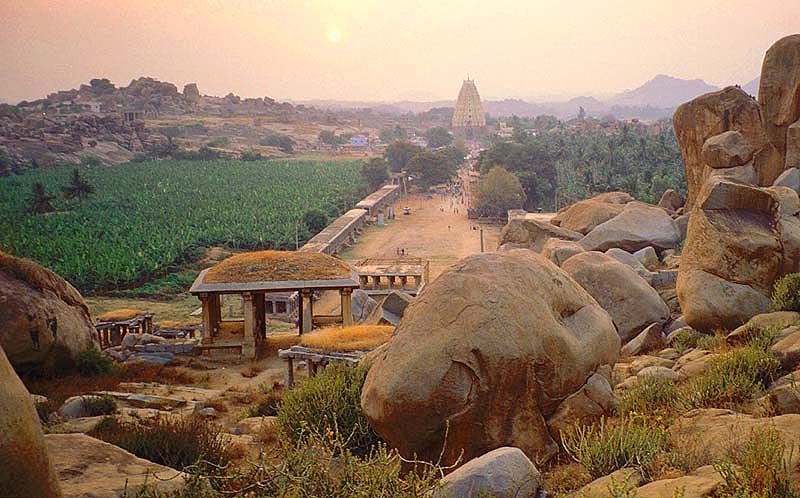
Hampi, India
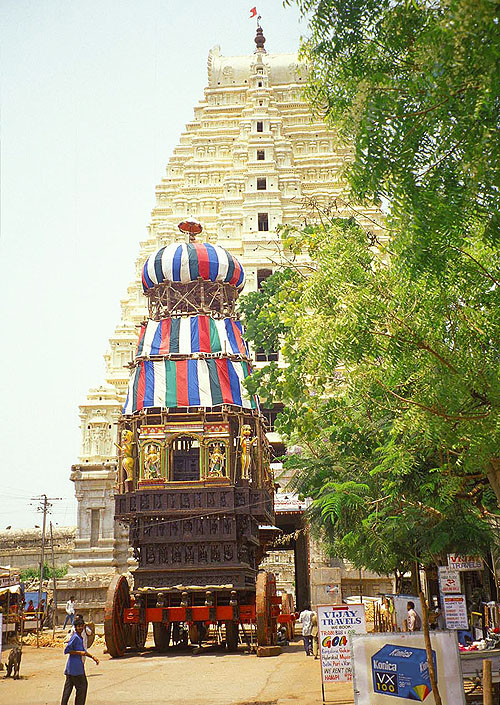
Hampi, India

This frenzy was the cue for the police officers to maintain some semblance of order through the judicious use
of billy clubs and switches. The rest of the world doesn't even allow dogs to be treated this way -
Hampi, India
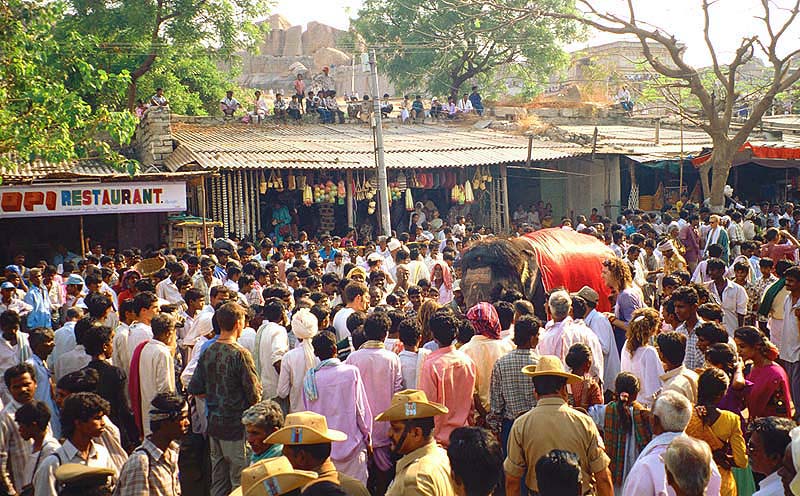
Hampi, India
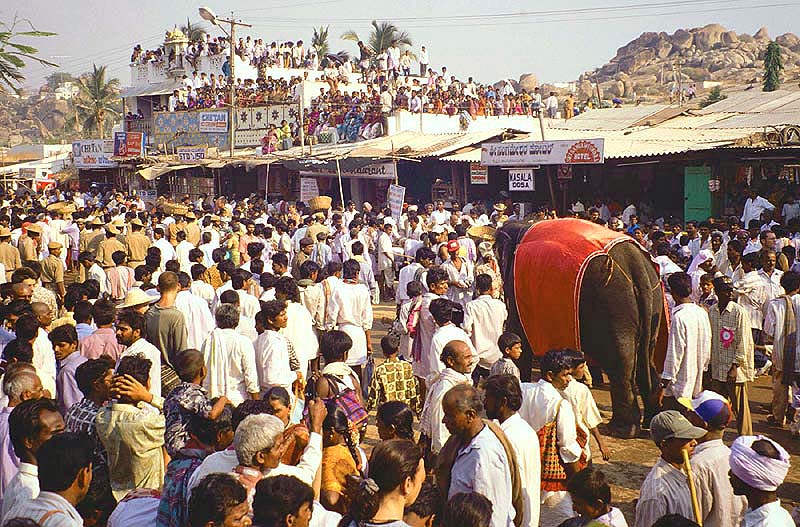
Hampi, India
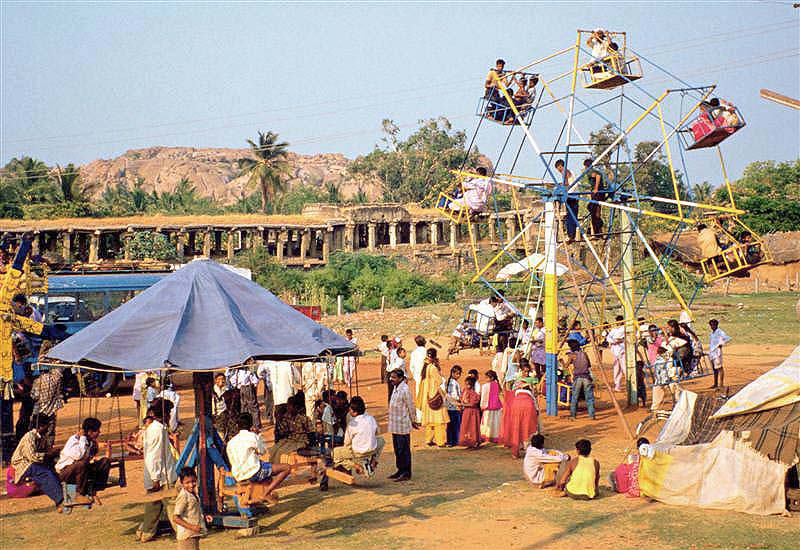
and then acrobatically climbed into the interior to spin the wheel even faster by running in place like a caged hamster -
Hampi, India
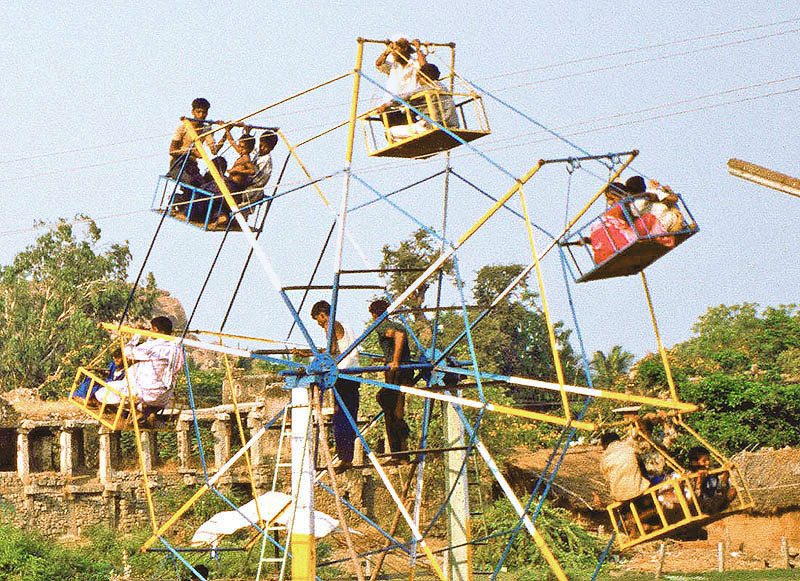
Hampi, India
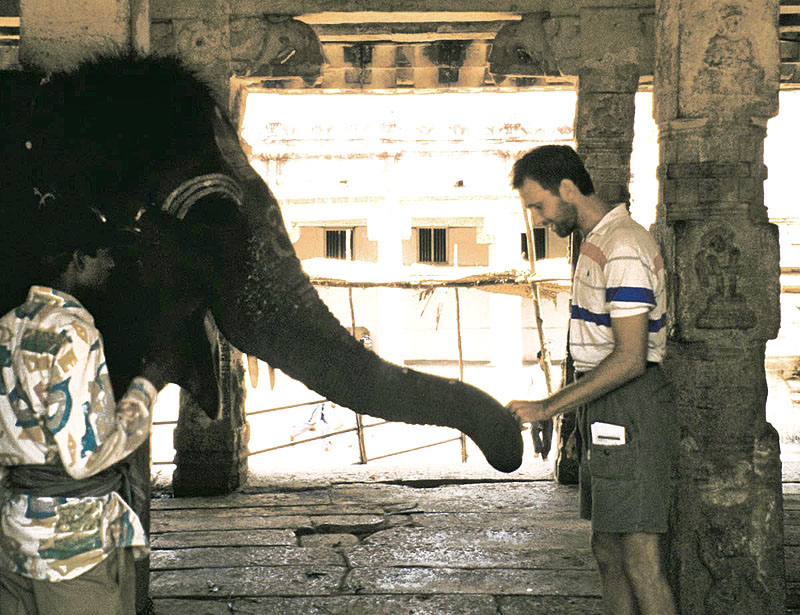
with an offering of small change. The elephant quickly snatches the coins with its trunk and gives them to the mahout. Then the recipient
bows toward the elephant, which gives the blessing by lightly tapping the receiver's head with the underside of its trunk! -
Hampi, India
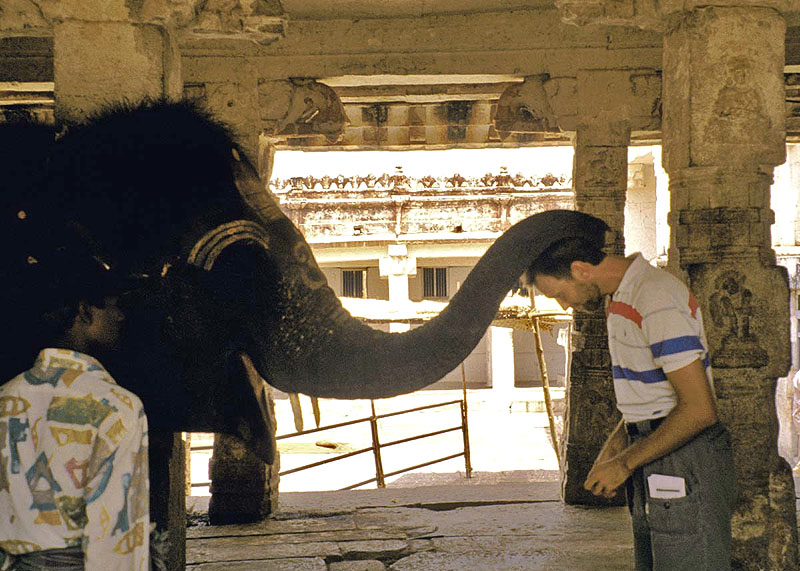
really does have a spiritual aspect - even to the westerner. After all, it requires a certain amount of faith to bow before such a large beast - you have seen the tragic footage of "elephants gone wild" at the circus! -
Hampi, India
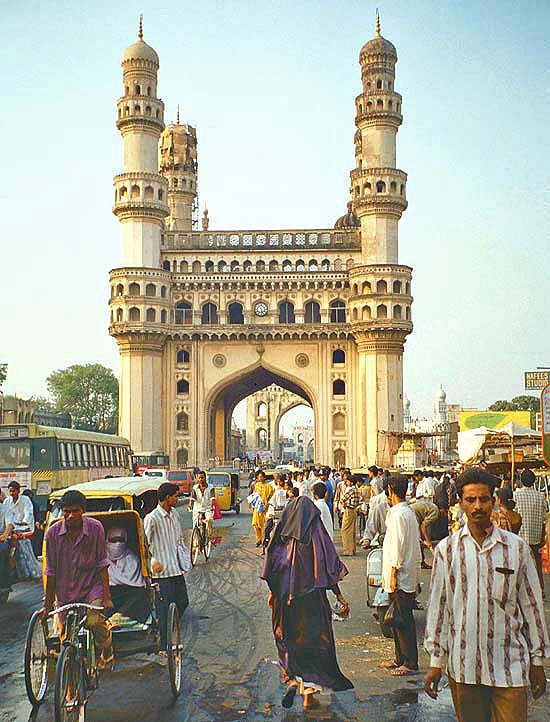
of the Charminar, built in 1591, rise more than 180 feet. Visitors can climb the spiral staircase within the minarets
for a panoramic view of the city. The beautiful structure was built as a memorial to plague victims -
Hyderabad, India
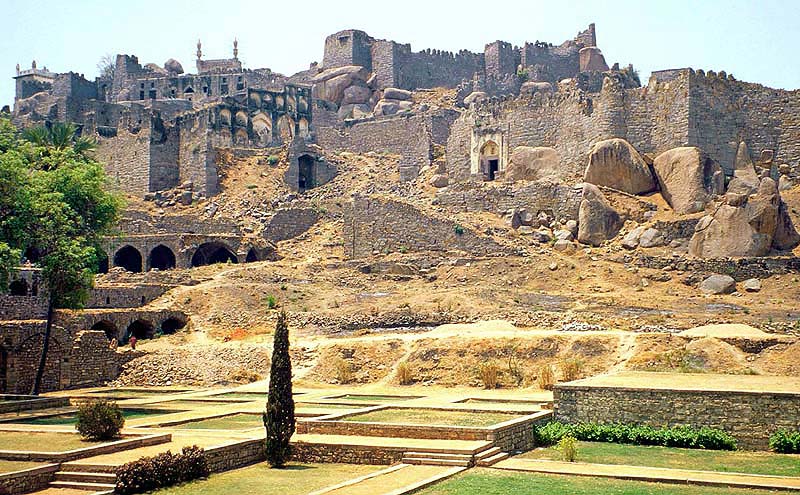
This huge fort contains a 10 kilometer outer wall built to resist Mughal invasions from the north -
Hyderabad, India
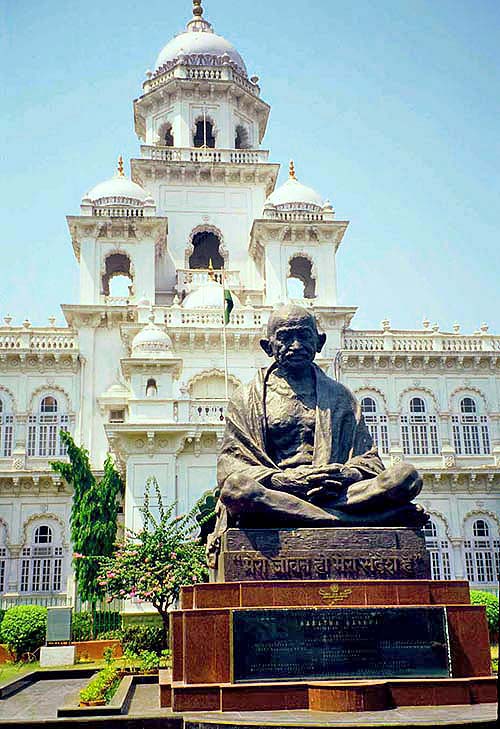
Hyderabad, India
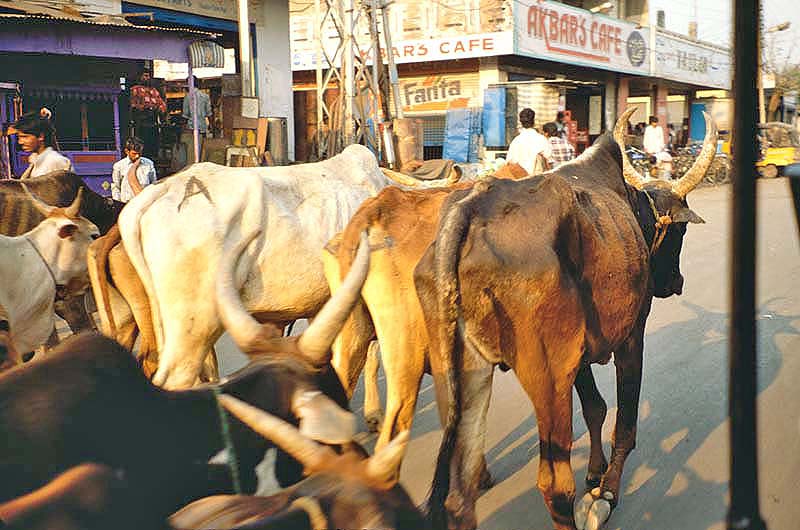
Hyderabad, India
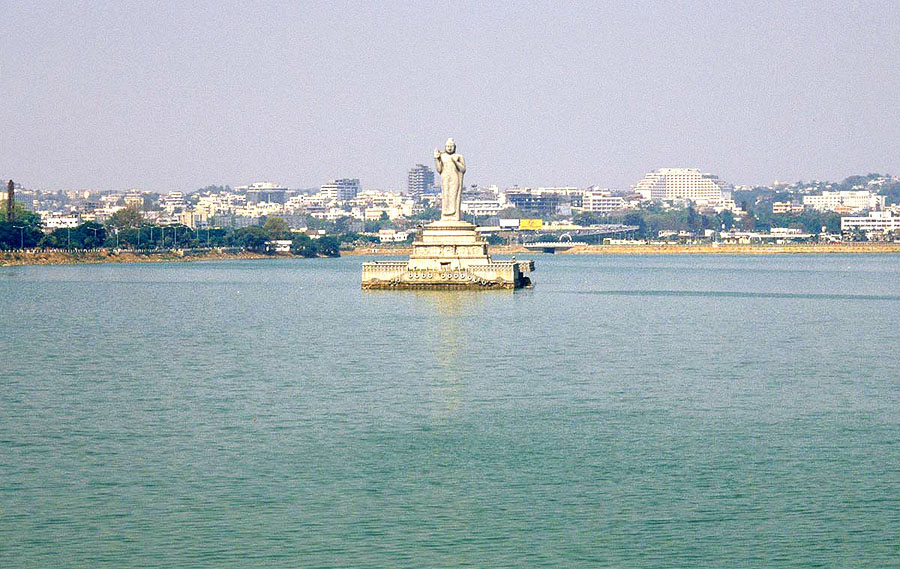
Roughly 200 sculptors worked on the white granite for two years -
Hyderabad, India
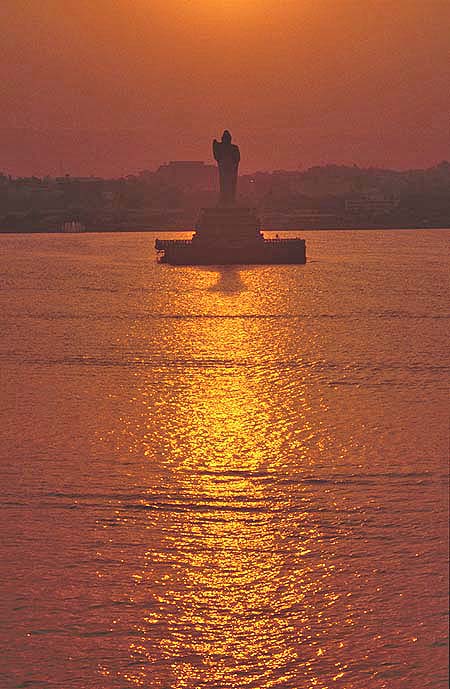
from 1985 to 1992 due to an unfortunate shipping accident! -
Hyderabad, India
Return to Photo Index Return to Clickable Map Return to Home Page
For authorized use of these photos, please contact Ron Miller at TheHappyCannibal@gmail.com